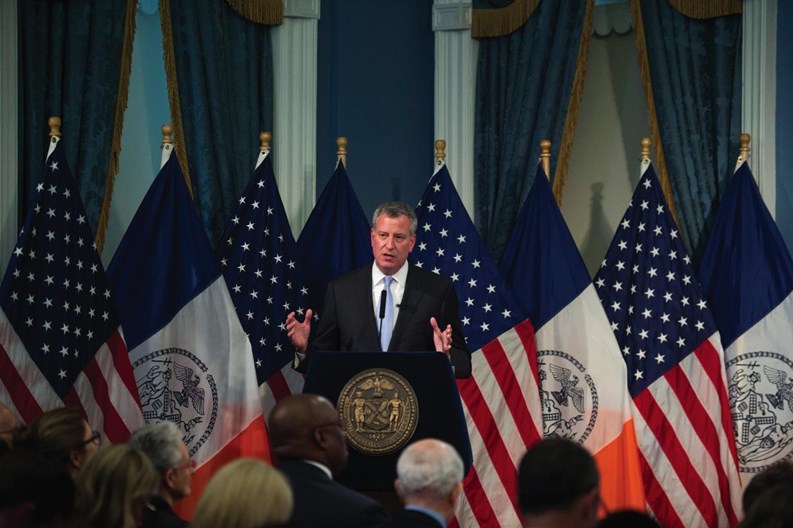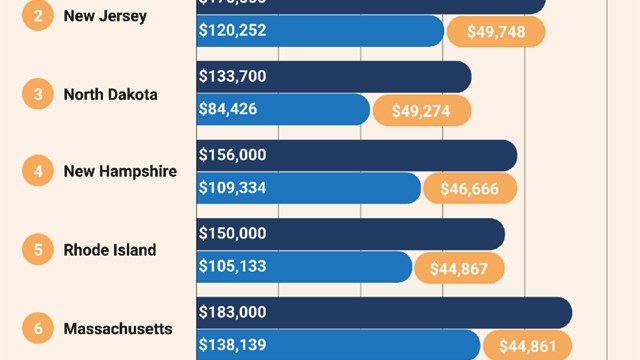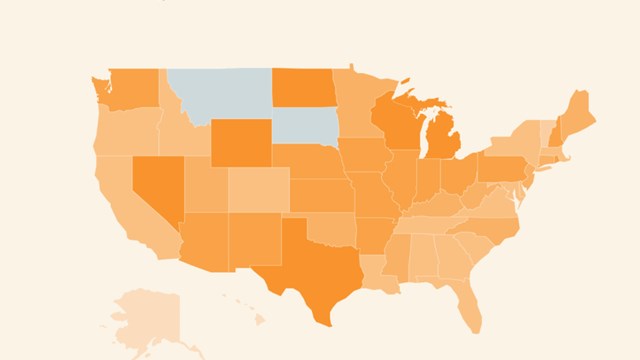Mayor Bill de Blasio and City Council Speaker Melissa Mark-Viverito shook ceremonious hands over New York City’s budget a week before it was due, after the mayor reversed his position on hiring new police officers. Thanks to strong local economic growth, the $78.5 billion budget for the coming fiscal year starting July 1, includes more spending on city services nearly across the board. The final budget is a 4.7 percent increase from last year.
Aside from the 1,300 new police officers slated for hire in the new fiscal year, the budget also includes $100 million for homeless services, $54 million more for mental health services, and $163 million to expand after-school programs for middle schoolers. The city’s libraries also received a $39 million boost to extend library hours, and keep some locations open six days a week.
Pension Money
More contentious though, is the mounting costs of the city's pension obligations. With the support of Governor Andrew Cuomo, police and fire unions want disability pension plans to resemble those of hires from before 2009, before the pension was changed. Instead, de Blasio has proposed to limit that reinstatement to severely disabled cops and firefighters. The mayor's reform would cost the city an additional $2 billion over the next five years, compared to the $6 billion supported by Cuomo and the unions.
Rent Stabilization and 421-a
Meanwhile, after fits and starts of negotiations, state lawmakers finally agreed to a four-year extension for the 421-a tax provision. The 421-a provision gives developers a tax abatement if their projects make at least 20 percent of the units in a development affordable. The tax break expired June 15, which began 10 days of New York State operating without it. But, reports show it made little difference to the number of work permits for residential construction in the city. The luxury market is going strong thanks to the flow of international capital to New York real estate, but the demand for other types of housing inside the city remains.
Lawmakers in Albany added a caveat to the provision that will cause the tax break to expire in six months if the Real Estate Board of New York and labor unions cannot agree on worker wages in that time.
Tenant rights advocates and the real estate industry continue to spar over the needs of the city in terms of demand for more housing across all income levels, and more affordable housing units. “The reason why we have an affordable housing problem is because we have an overall housing problem,” Jed Walentas, a principal for the real estate developer Two Trees Management, said at an industry luncheon in June. “We need to think about building housing at every level and smart ways to do it.”
The Real Estate Board of New York (REBNY) sided with the mayor on the extension of the 421-a tax break, while labor unions campaigned against it, and pressed for higher wages for construction workers involved in new development projects. Albany lawmakers also extended for four more years the co-op/condo real estate tax abatement for homeowners living in the city’s co-ops and condos.
More Housing
The de Blasio administration's plan to provide more market-rate housing across the city in exchange for a bump in affordable units was also reflected in the mayor's proposal to set aside $1.6 billion for the Economic Development Corporation (EDC) and the Department of Environmental Protection (DEP). The two city agencies would be tasked to promote greater residential development by investing in new infrastructure for 15 neighborhoods throughout the city.
The Independent Budget Office (IBO), however, said the plan isn't specific enough to allow for a transparent use of the money, according to an article on the website, Capital New York.
Overall, however, New York City is on its best financial footing since the 2000s. Mayors often underestimate budgets to avoid agency cutbacks in the middle of the year, but city revenue grew to $51 billion in May, which led to a $3 billion in surplus for fiscal year 2015, a higher surplus than usual. Additionally, $1 billion remains stashed away in former Mayor Bloomberg's “rainy day” fund, and $2.6 billion has been devoted to city government retiree's health care, according to Crains New York Business.
Energy Savings
Another commitment is a continuation of the Greener, Greater New York Buildings initiative begun by former Mayor Bloomberg. A total of $1.8 billion is set aside for de Blasio’s sweeping green buildings plan, allowing the city to lead by example and retrofit all public buildings with any significant energy use by 2025. This is part of the administration’s broader plan to achieve an 80 percent reduction in emissions by 2050, making New York City the largest city in the world to make that commitment.
Tom Lisi is associate editor of The Cooperator.










Comments
Leave a Comment